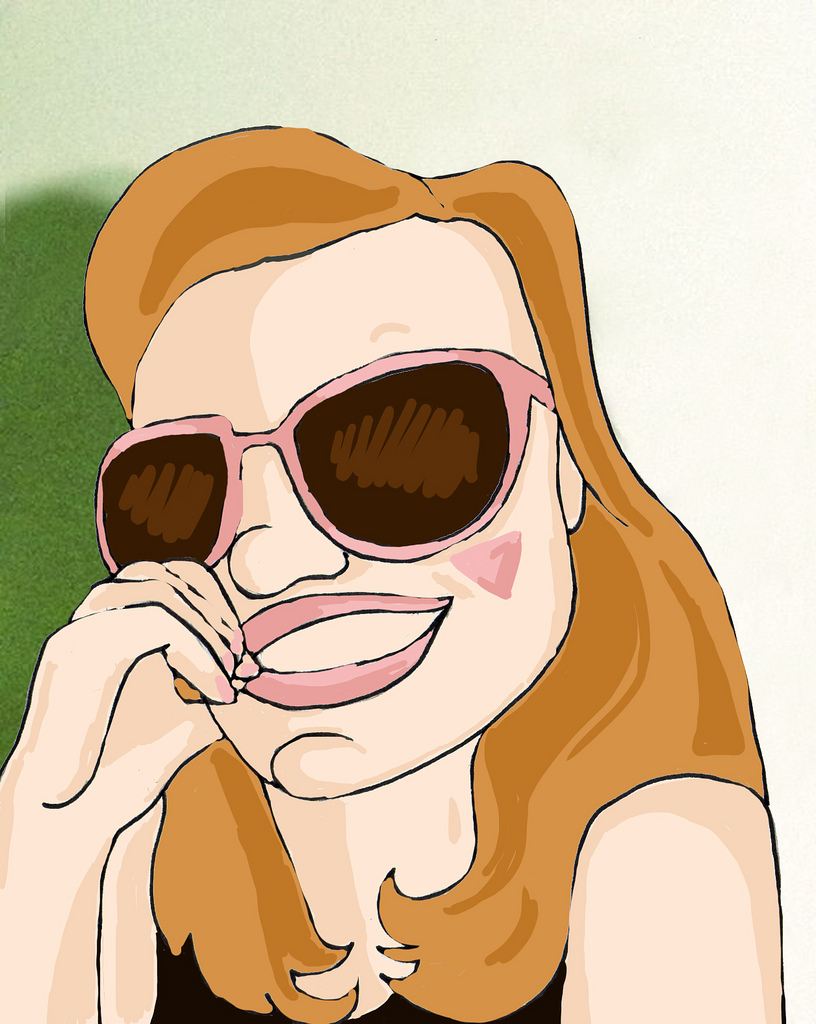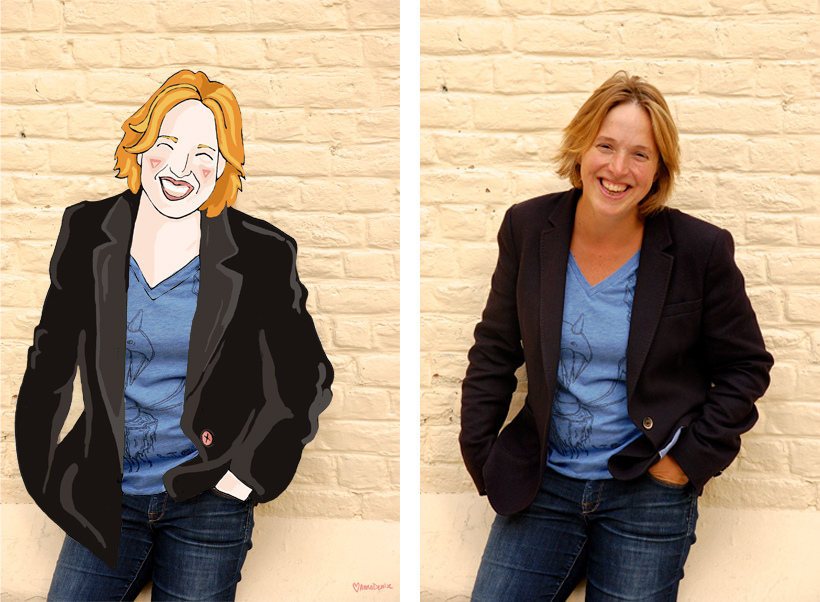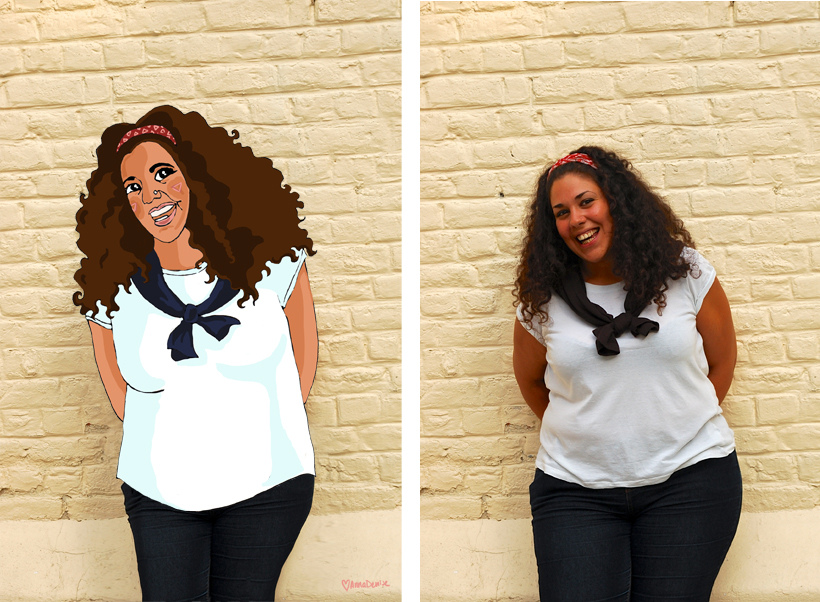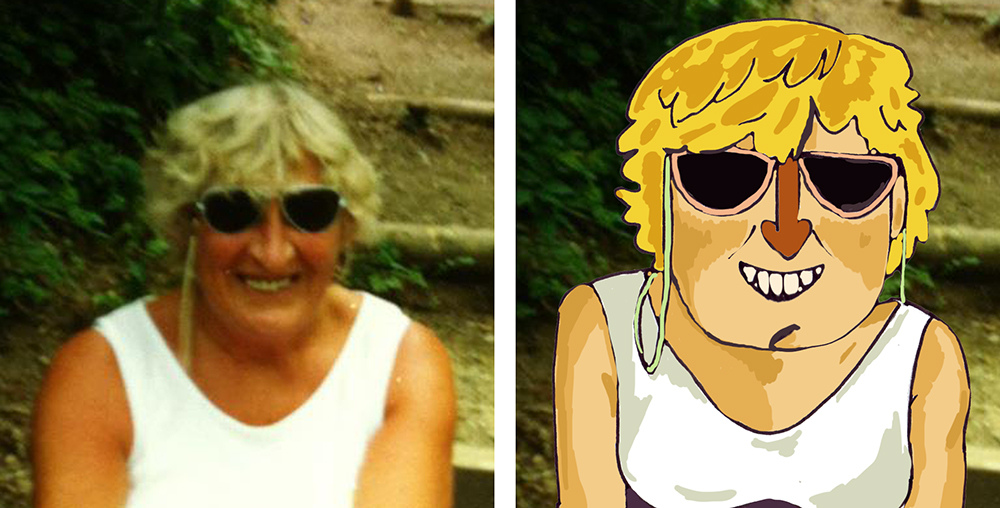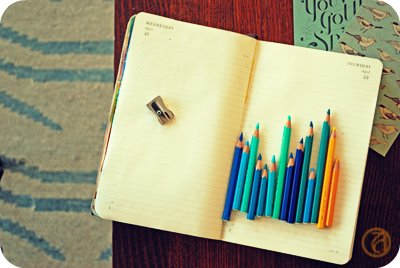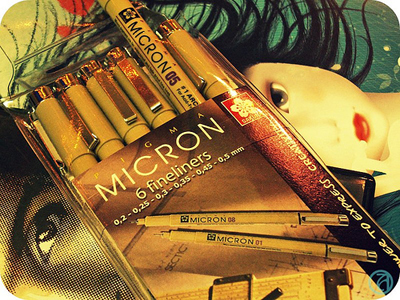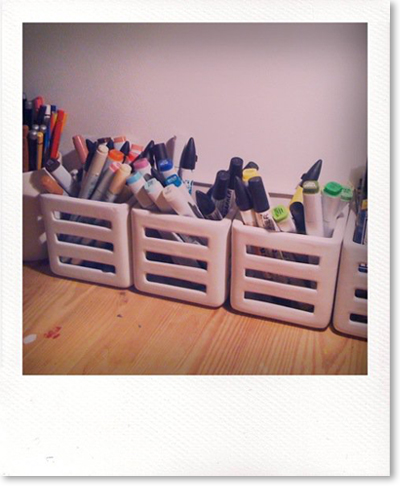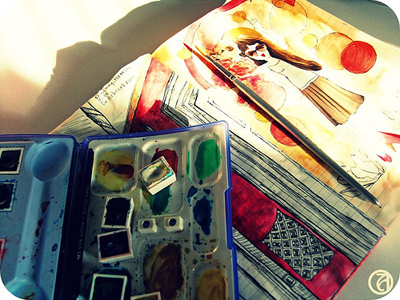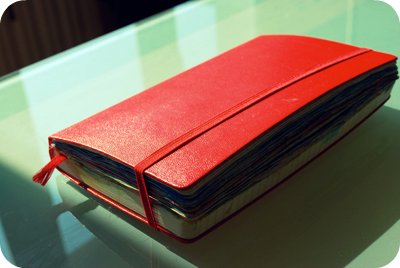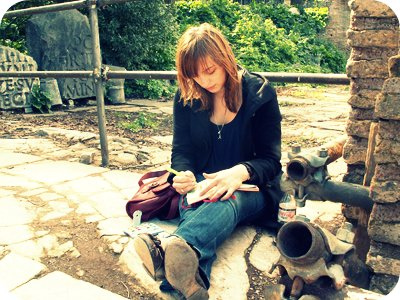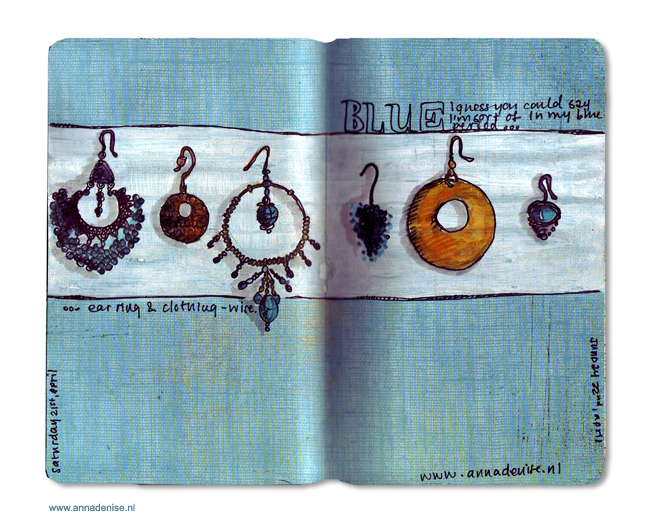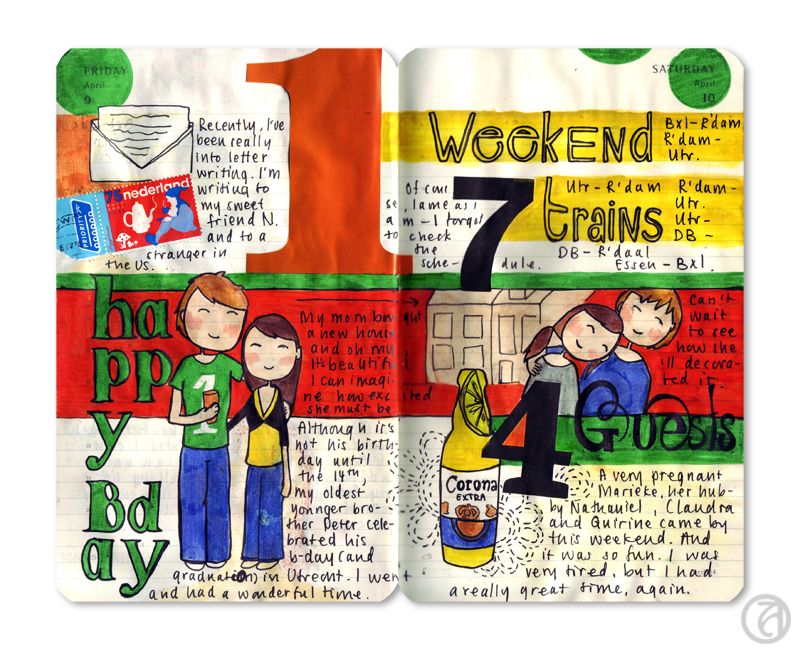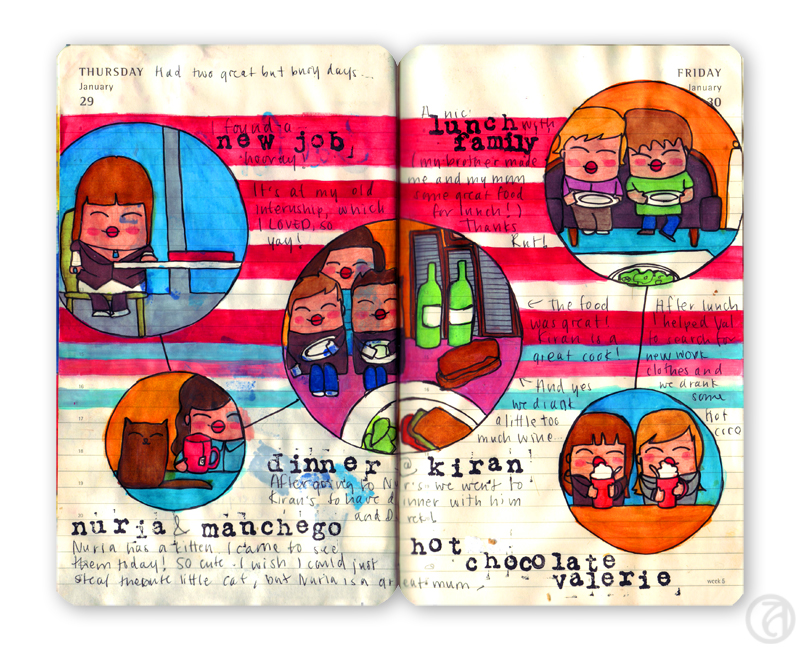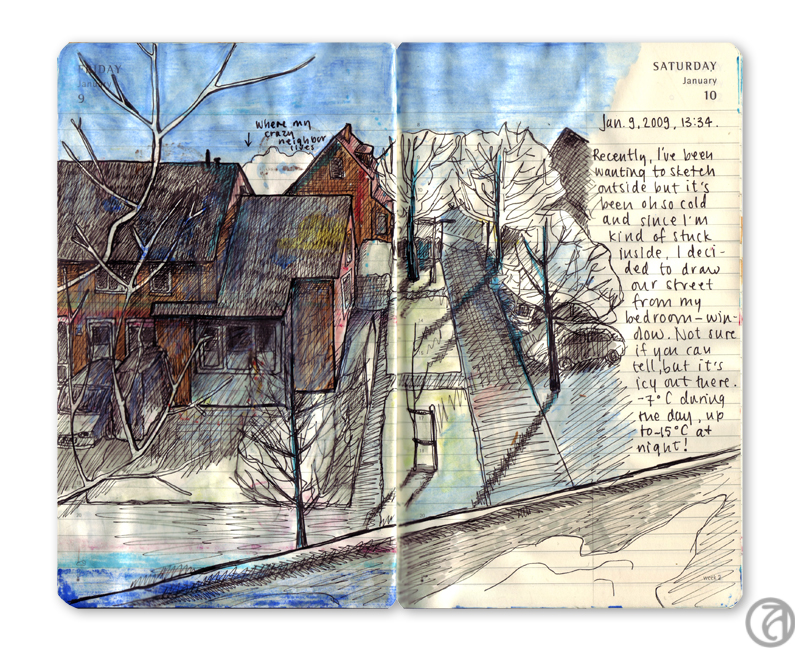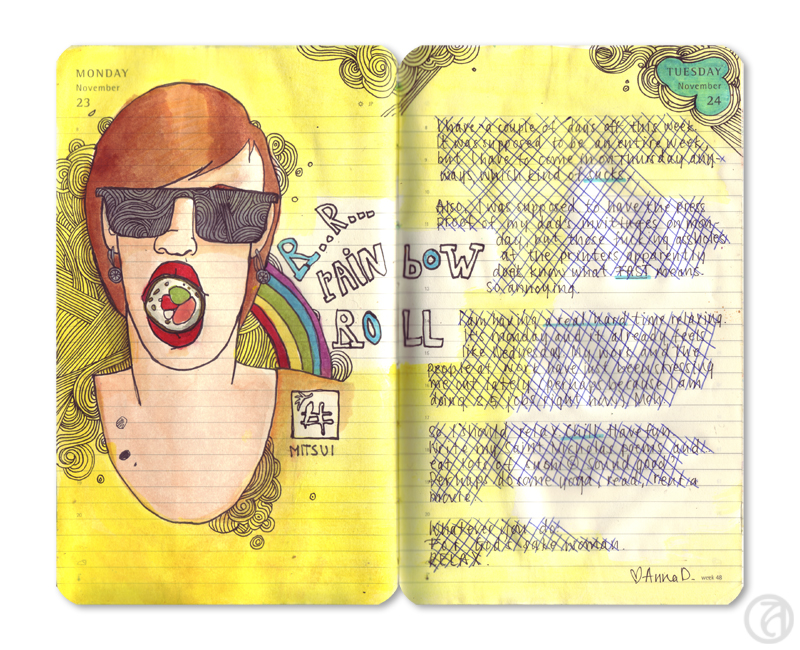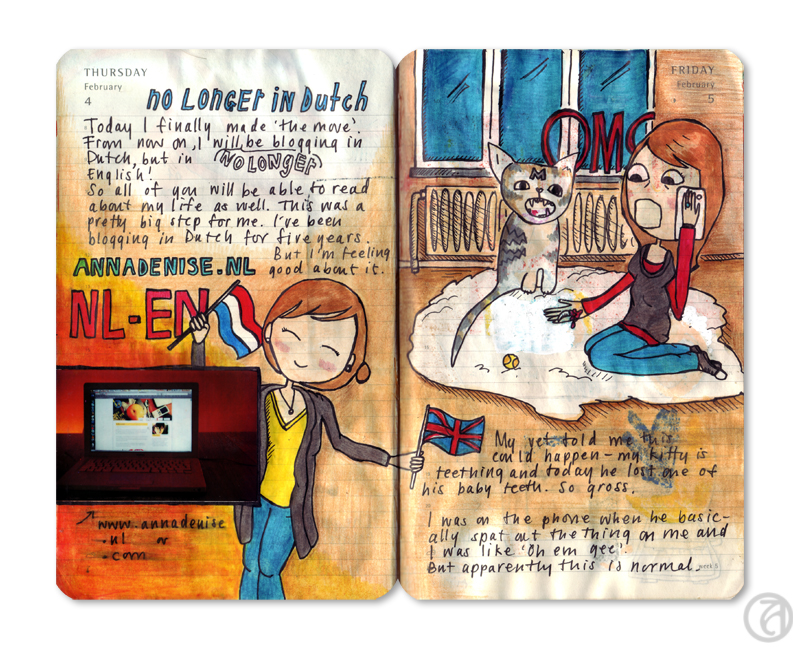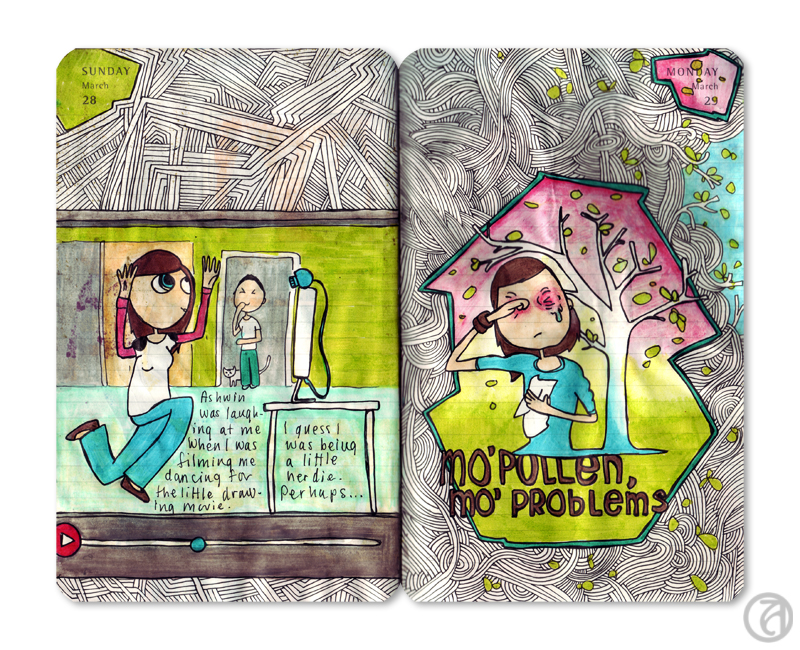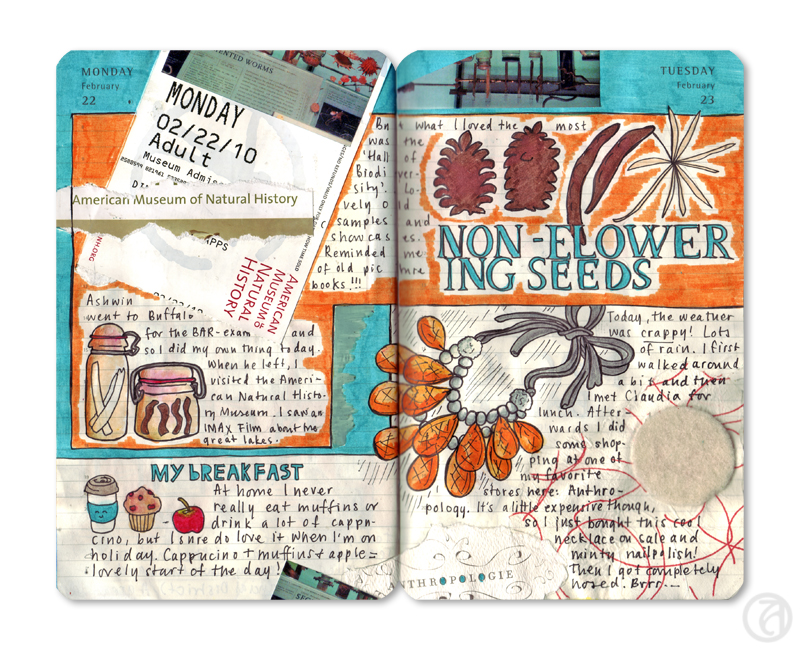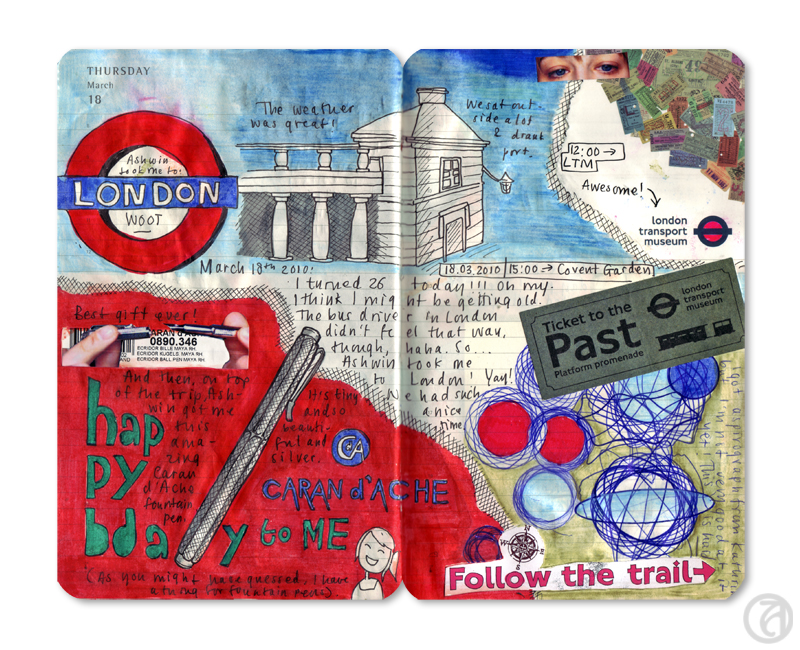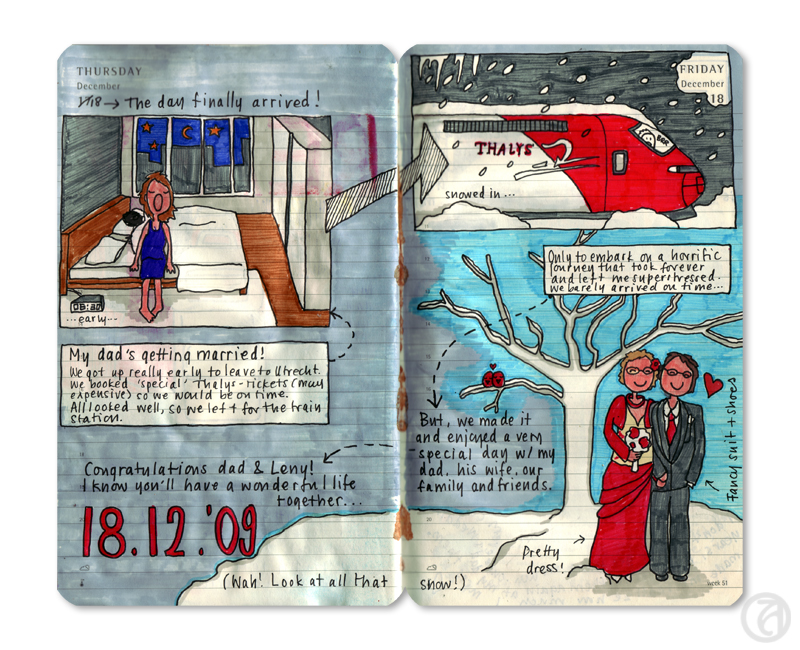"It's a journal, and it's all about you," she said, whilst handing me a plastic bag. A very personal wedding gift, with two more volumes to follow, "for when you have kids of your own". Hypothetical children Jochem and I had just promised to always take care of together, no matter what, in good times and bad.
From the moment I was born, until age 5, my mother kept a journal of my life. What I did all day, what I ate (or refused to eat), who I played or fought with, what words I learned or made up, and all the other fascinating stuff that makes up a childhood.
© Anna Denise Floor
It's weird - reading about yourself. Having your mother tell you, directly, the hopes and dreams she had for you when you were three. Theories about what you would be like when you'd grow up and the things she hoped you'd learn to do or stop doing at some point (almost all wrong, hehe). But what fascinated me the most were the mundane details about our lives. About my mother's life, mostly. Picking me up from daycare, trips to the library, disagreements with friends about how to and how not to raise children, debates with my dad about what to do about my stubborn behavior (they were powerless, I tell you, powerless).
© Anna Denise Floor
Reading her thoughts and worries made me remember that my parents were my age when they had me. I was their first and like I would be and no doubt will be, they were clueless. How do you raise a child? I suppose everyone just stumbles along and tries their best, and I know this journal (and the two preceding it) will be a great reminder and comfort to me when I someday have children of my own. Because my parents were just trying out this and that (and then that and this), and I turned out somewhat sane. I know how to hold a job and stuff. I pay my taxes! I water my plants! Eh. Well, mostly. Sometimes.
© Anna Denise Floor
I do hope I can turn this into some kind of family tradition and do the same for my children. In the meantime I'll treasure this amazing gift, this labor of love (can you believe she did the same for my two brothers?!). Thank you, mama!


